Is the grain changed by re-polishing?
We often hear episodes that the steel has been dramatically changed by re-polishing.
"Straight grain (masame) has been changed to small wood grain (ko-itame) by re-polishing!"
"Small wood grain has become large burl grain (o-mokume)!"
Firstly we have to recognize that by grain we do not mean the layer pattern. The layer pattern never be changed by re-polishing, but the grain may be changed by the individual polishers.
On good quality blades, an array of steel particles also constitute grain. Therefore the grain can be changed by how the polisher treat these particles. (=> steel)
(=> Episode by Kokaji, an excellent re-polishing)
An example of re-polishing.
Here is a tanto that has been re-polished. Both of these finishes, before and the after, are in the classical style.
Before

After

The steel
Before

After
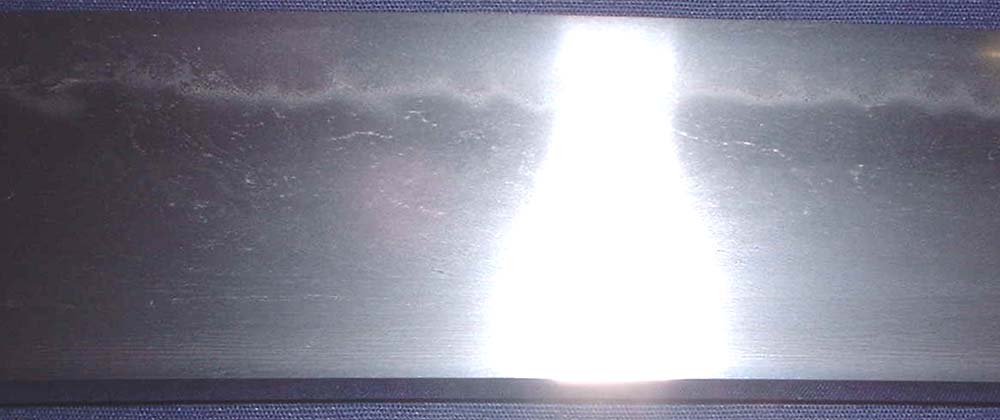
Please look at the grain near the back for instance. It has changed so much.
On the first polishing, it is a small wood grain of chikei. The polisher brings up steel particles.
On the next polishing, it is a masame layer pattern. The polisher brings up the steel layers. We can see some chikei there, but not as much as before.
The hamon
Before
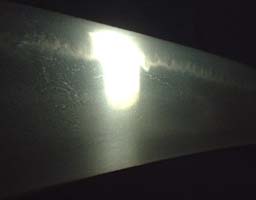
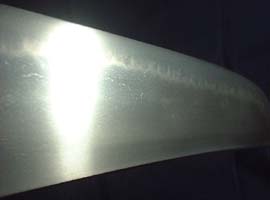
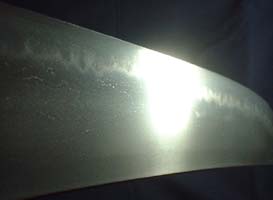
After
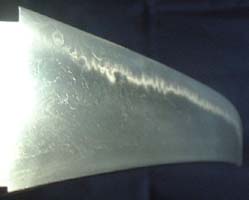
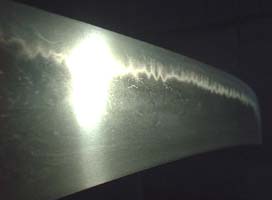
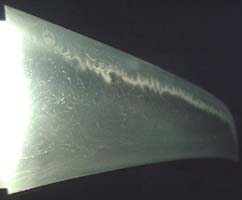
The first polish brings out the blade characteristics subtly, so the overall impression of the blade is calm and gentle. The second polish displays every aspect emphatically. The impression of the blade is wild and loud. The differences arise from the aesthetic sense of the individual polishers.